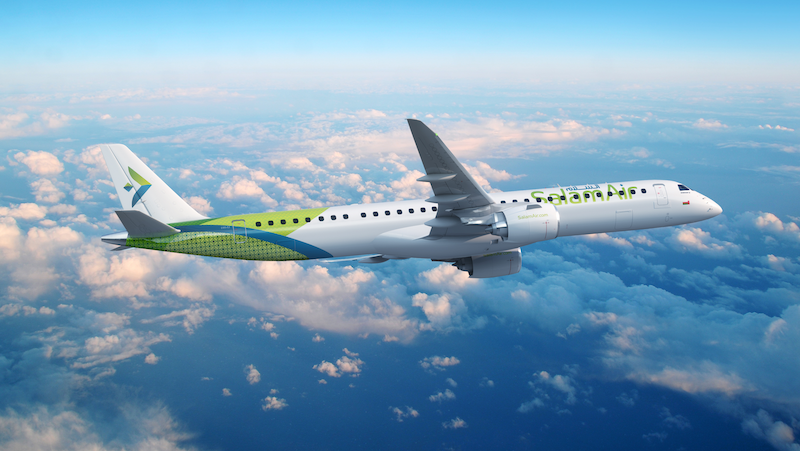
SalamAir’s E195 E2s, scheduled to start arriving late tis year, will initially be used on domestic services including flights into desert airstrips to service oil installations
The growing trend of crossover jets being incorporated into airline fleets as complements to larger narrowbody aircraft may create a gap for this class of aircraft in a region where it has been noticeably thin on the ground.
The Middle East has provided slim pickings for Embraer’s E-Jets and Airbus’s A220 in recent years. Partly this has been because many airlines in the region are more focused on long-haul services. Partly it may be because of the popular belief (especially in the Gulf) that anything smaller than an Airbus A320/Boeing 737 simply isn’t treated seriously by local passengers.
Omani LCC SalamAir, which has ordered six E195 E2s and placed purchase rights for a further six, is a regional jet first-timer. It will use them to complement its A320neos and A321neos.
“The aircraft will grow to be a core part of our fleet portfolio,” SalamAir CEO Capt Mohamed Ahmed said. The Omani aircraft will have a two-class configuration – three business class and 132 economy seats. Deliveries will start in Q4 2023.
“They will allow the airline to open new local and regional cities and increase its frequency to these destinations.” The new fleet will be used on domestic flights initially, to the sultanate’s four international airports at Muscat, Salalah, Suhar, and Duqm, as well as to four Omani desert airstrips serving oilfields.
“As we receive more aircraft, we will be able to use them on regional airports in neighbouring countries which today are not connected to Oman,” Ahmed added.





